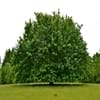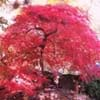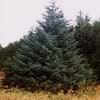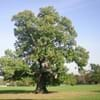Life Span
Perennial
Perennial
Origin
Western United States, Northwestern United States, California, Canada
Australia
Types
Black Maple, Mountain Maple,
Norway Maple
Not Available
Habitat
Riverbanks, Stream side
Scrubs, tussock grasslands, Upland savannas
USDA Hardiness Zone
5-9
10-11
Sunset Zone
4, 5, 6, 7, 8, 9, 10, 11, 12, 13, 14, 15, 16, 17
8, 9, 12, 13, 14, 15, 16, 17, 18, 19, 20, 21, 22, 23, 24
Habit
Oval or Rounded
Upright/Erect
Flower Color
Yellow, Red, Green
Lemon yellow
Flower Color Modifier
Bicolor
Bicolor
Fruit Color
Yellow, Red, Green, Sandy Brown
Gray Green
Leaf Color in Spring
Light Green, Yellow green
Blue Green
Leaf Color in Summer
Green
Blue Green
Leaf Color in Fall
Gold
Blue Green
Leaf Color in Winter
Not Available
Blue Green
Leaf Shape
Irregular
Long Narrow
Plant Season
Spring, Summer, Fall
Spring
Sunlight
Partial Sun, Partial shade
Full Sun
Type of Soil
Clay, Loam, Sand
Loam, Sand
The pH of Soil
Acidic, Neutral, Alkaline
Acidic, Neutral, Alkaline
Soil Drainage
Average
Well drained
Bloom Time
Early Spring, Spring
Spring, Late Winter
Tolerances
Not Available
Drought
Where to Plant?
Ground
Ground
How to Plant?
Seedlings
Seedlings
Plant Maintenance
Medium
Medium
Watering Requirements
Do not let dry out between waterings, Keep ground moist, Requires regular watering
Do not water excessively
In Summer
Lots of watering
Lots of watering
In Spring
Moderate
Moderate
In Winter
Average Water
Average Water
Soil pH
Acidic, Neutral, Alkaline
Acidic, Neutral, Alkaline
Soil Type
Clay, Loam, Sand
Loam, Sand
Soil Drainage Capacity
Average
Well drained
Sun Exposure
Partial Sun, Partial shade
Full Sun
Pruning
Remove branches, Remove damaged leaves, Remove dead branches, Remove dead leaves, Remove dead or diseased plant parts
Remove dead or diseased plant parts, Requires little pruning
Fertilizers
All-Purpose Liquid Fertilizer, Nitrogen
All-Purpose Liquid Fertilizer, No fertilizers needed
Pests and Diseases
Red blotch
Insects, Root rot
Plant Tolerance
Not Available
Drought
Flower Petal Number
Single
Single
Foliage Texture
Coarse
Fine
Foliage Sheen
Matte
Matte
Attracts
Bees, Birds, Flying insects, Insects
Butterflies
Allergy
Pollen
Asthma, Eye irritation, Headache, Nose Irritation, Throat itching, Vomiting
Aesthetic Uses
Not Available
Showy Purposes
Beauty Benefits
Improve hair condition
Not Available
Environmental Uses
Air purification, Nesting sites for birds, Shadow Tree, Wildlife
Air purification, soil stabilisation
Medicinal Uses
Tonic, tuberculosis
Not Available
Part of Plant Used
Flowers, Sap, Tree trunks
Flowers, Sap, Seeds
Other Uses
Application in Furniture, Basketary, Can be made into a herbal tea, Decorative veneers, flooring, paneling, Edible syrup, Fibre, Making piano frames, Used as firewood, Used as fuel, Used in salads
Used as a dye, Wood is used fore making tools
Used As Indoor Plant
No
No
Used As Outdoor Plant
Yes
Yes
Garden Design
Feature Plant, Shade Trees
Shade Trees, Street Trees
Botanical Name
ACER macrophyllum
ACACIA aneura
Common Name
Big-leaf Maple, Oregon Maple, Pacific Maple
Mulga, True Mulga
In Hindi
बड़ा पत्ता मेपल के पेड़
Mulga
In German
Big Blatt Ahornbaum
Mulga
In French
Grande feuille Érable
Mulga
In Spanish
Gran hoja del árbol de arce
Mulga
In Greek
δέντρο Maple μεγάλο φύλλο
mulga
In Portuguese
Árvore de bordo Folha grande
Mulga
In Polish
Duży liść klonowy
Mulga
In Latin
Big Maple folia ligni
Mulga
Phylum
Magnoliophyta
Magnoliophyta
Class
Magnoliopsida
Magnoliopsida
Family
Aceraceae
Fabaceae
Clade
Angiosperms, Eudicots, Rosids
Angiosperms, Eudicots, Rosids
Tribe
Not Available
Not Available
Subfamily
Not Available
Not Available
Number of Species
Not Available
Season and Care of Big leaf Maple and Mulga Tree
Season and care of Big leaf Maple and Mulga Tree is important to know. While considering everything about Big leaf Maple and Mulga Tree Care, growing season is an essential factor. Big leaf Maple season is Spring, Summer and Fall and Mulga Tree season is Spring, Summer and Fall. The type of soil for Big leaf Maple is Clay, Loam, Sand and for Mulga Tree is Loam, Sand while the PH of soil for Big leaf Maple is Acidic, Neutral, Alkaline and for Mulga Tree is Acidic, Neutral, Alkaline.
Big leaf Maple and Mulga Tree Physical Information
Big leaf Maple and Mulga Tree physical information is very important for comparison. Big leaf Maple height is 3,048.00 cm and width 120.00 cm whereas Mulga Tree height is 550.00 cm and width 370.00 cm. The color specification of Big leaf Maple and Mulga Tree are as follows:
Big leaf Maple flower color: Yellow, Red and Green
Big leaf Maple leaf color: Light Green and Yellow green
Mulga Tree flower color: Lemon yellow
- Mulga Tree leaf color: Blue Green
Care of Big leaf Maple and Mulga Tree
Care of Big leaf Maple and Mulga Tree include pruning, fertilizers, watering etc. Big leaf Maple pruning is done Remove branches, Remove damaged leaves, Remove dead branches, Remove dead leaves and Remove dead or diseased plant parts and Mulga Tree pruning is done Remove dead or diseased plant parts and Requires little pruning. In summer Big leaf Maple needs Lots of watering and in winter, it needs Average Water. Whereas, in summer Mulga Tree needs Lots of watering and in winter, it needs Average Water.





